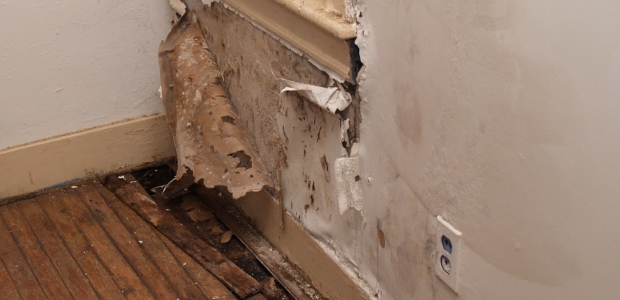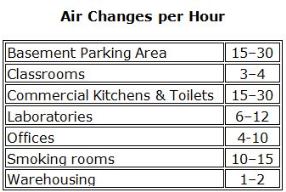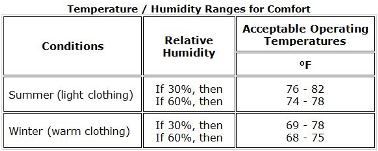
Odors, Smells & Other Strange 'Stuff'
Any time there is moisture, we can get mold growth, especially when relative humidities are greater than 60 percent and the temperatures are higher than the recommended temps.
Jerry Laws, editor of Occupational Health & Safety magazine, called me and asked a question that came from a reader: "What is IAQ, and why do we need to be concerned about it?"
"Jerry, it's good to talk with you again. Let me see what I can tell you about IAQ. IAQ is indoor air quality. It means the quality of the air inside your home or office," I said. "The reason that we need to be concerned is because indoor air quality is usually a lot different than outdoor air quality. It can cause health problems.
"In our outdoor air, if we have some odors, such as from a skunk, those odors—smells, if you will—will dissipate after a period of time due to the motion of the air. That motion is due to the speed of the wind. In our office or home, we don't have that much turbulence or air motion, so the odors linger and can concentrate.
"Inside, we have our HVAC—heating, ventilation, and air conditioning—system that is designed to move and treat the air. That treatment for the most part is just filtration. The IAQ odors will linger. Some buildings have ultraviolet lamps that can treat some materials, but most don't. This buildup can cause sick building syndrome. But that's a story for another conversation."
Jerry asked, "What causes these inside odors?"
"You, me, our pets, and everything that we do and use," I replied. "People and animals give off body odors, dandruff, hair, and flaking skin. We use chemicals or odorous products and, depending upon room temperatures and humidity, those odors and smells could multiply with building moisture to allow molds to grow and spread.
"Let's take your dog. After a day of playing out in the lawn, he comes in and there's an odor about him. You give him a bath and he shakes moisture all over the mud room—what does that room smell like now?
"Another example: What's it like when you're getting ready to go out on a date with your wife? You put on your deodorant and your after-shave, and you know that the smell precedes you out the door."
"O.K.," Jerry said. "So what can we do about it?"
"Jerry, we need to know something about the HVAC system in the building, what the settings are, how much air we're moving, and how much fresh air are we bringing in from outside," I said. "Usually, only commercial HVAC systems in office buildings have the ability to push a percentage of stale air out and bring in make-up fresh air. This can help clean up odors in office buildings, but not in homes.
"If we look at information from the American Society of Heating, Refrigerating, and Air-Conditioning Engineers, or ASHRAE, the standards-setting organization for IAQ requirements, they have recommendations as to number of air changes per hour depending upon the use of the space and temperature/humidity ranges in various seasons to maintain comfort levels."

Source: Adapted from https://en.wikipedia.org/wiki/Air_changes_per_hour

Source: Adapted from ASHRAE 55-2010
Molds
"When indoor temperatures and humidity get higher than the recommended levels, the moisture in the air allows mold to grow. And growing mold gives off odors and volatile organic compounds, or VOCs," I continued.
Jerry said, "Now, you're bringing in another aspect of IAQ, and that is mold growth. What's the story about 'toxic mold'?"
"Jerry, it is a great question," I said. "There is no such thing as toxic mold (as per the CDC1). What there is are toxins that come from various molds, and there are people who are allergic to mold and mold byproducts. Let’s talk about people and their reactions to mold. As I said before, any time there is moisture, we can get mold growth, especially when relative humidities are greater than 60 percent and the temperatures are higher than the recommended temps.
"The mold that most people associate with IAQ problems is black mold, or what is technically called Stachybotrys chartarum. It is not the most common of the inside molds, but it is the mold that causes many health problems. Do an Internet search on Stachybotrys2 and read about some of the problems people have with it. The Centers for Disease Control and Prevention says, 'The common health concerns from molds include hay fever-like allergic symptoms. Certain individuals with chronic respiratory disease (chronic obstructive pulmonary disorder or asthma) may experience difficulty breathing. Individuals with immune suppression may be at increased risk for infection from molds.' Some of the more common molds include Cladosporium, Penicillium, Aspergillus, and Alternaria, according to CDC1."
"So," Jerry said, "if excessive temperatures and humidity can cause mold to develop, what feeds it? Why does it continue to grow?"
I quoted EPA, which says, "'Molds live in the soil, on plants, and on dead or decaying matter. Outdoors, molds play a key role in the breakdown of leaves, wood, and other plant debris. Molds belong to the kingdom Fungi, and unlike plants, they lack chlorophyll and must survive by digesting plant materials, using plant and other organic materials for food. Without molds, our environment would be overwhelmed with large amounts of dead plant matter.'3 Or, in other words, molds indoors will grow on any organic material in the home: wood, wallboard, furniture, etc.
"Next, you will probably want to know something about the odors from molds. Again, we look to see what the EPA says: 'Some compounds produced by molds are volatile and are released directly into the air. These are known as microbial volatile organic compounds (mVOCs). Because these compounds often have strong and/or unpleasant odors, they can be the source of odors associated with molds. Exposure to mVOCs from molds has been linked to symptoms such as headaches, nasal irritation, dizziness, fatigue, and nausea.3' Measuring concentrations of mVOCs can be done with direct reading organic vapor instruments that read in the parts per billion range. Unfortunately, having this information doesn't really help because there are no published exposure limits . . . no guidelines as to what the numbers mean.
"If your workplace gets inundated with mold problems, it is better to get a commercial company in to perform the cleanup so that no employees get overexposed to the mold or its byproducts. If this occurs at home and is not severe, you may want to clean it yourself," I said. "There are, however, some caveats. You may not want to do this if you have any allergies to the mold or cleaning materials (bleach—sodium hypochlorite). If you still want to do this, the Wisconsin Department of Health has some instructions that can be found at https://www.dhs.wisconsin.gov/mold/clean.htm.
"Jerry, I hope that answers the reader's questions, and I am looking forward to you and I talking again," I said. "But, since I'm retired, I'm heading for the swimming pool and working on my tan."
References
1. CDC, Facts about Stachybotrys chartarum and Other Molds, September 2012: http://www.cdc.gov/mold/stachy.htm
2. ~318,000 hits
3. EPA, "A Brief Guide to Mold, Moisture, And Your Home," September 2010: http://www.epa.gov/mold/pdfs/moldguide.pdf
4. American Society of Heating, Refrigerating, and Air-Conditioning Engineers, www.ashrae.org
Standards
1. 62.1 & 62.12-2013, Ventilation for Acceptable Air Quality
2. 55-2013, Thermal Environmental Conditions for Human Occupancy
3. 52.2-2012, Methods of Testing Air Cleaning Devices Used in General Ventilation for Removing Particulate Matter
4. 188-2015, Legionellosis: Risk Management for Building Water System
This article originally appeared in the September 2015 issue of Occupational Health & Safety.